Many reports and studies have been released in the past couple of weeks. I have selected some interesting charts that show how much we are navigating very complex times for food. Consumers are sending often contradictory messages.
1 – I am no longer vegan… except in January
Here are three graphs on one key consumer preference (at least an important one for the FoodTech alternative meat industry).
First, here is the chart showing that the share of vegans and vegetarians is declining among US adults. This comes from a survey released earlier this month by Gallup. There are now about 4% self-declared vegetarians in the US and 1% vegans.
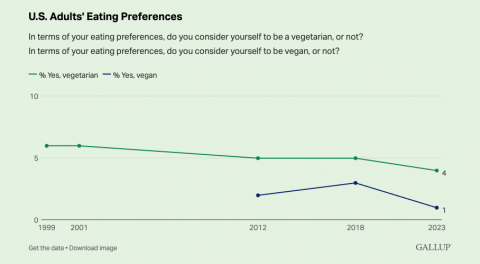
While not super accurate (4 points of margin of error), this corroborates the “impression” that the trend is going down. This is crudely confirmed by a quick look at Google Trends for the word “vegan” (worldwide). After a peak in 2019, internet queries around it are now declining.
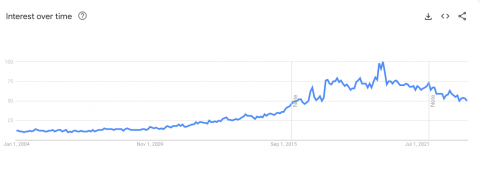
I already hear the negative voice saying, “oh, I knew it; it was only a fad; all those plant-based products will disappear as fast as they come”. But… things are not that simple.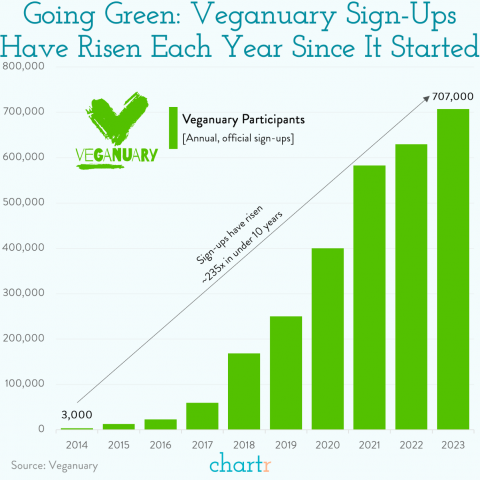
As shown on the graph above, the number of people participating in Veganuary (people being vegan for January) is still increasing fast year over year.
If veganism is declining or maybe becoming less appealing, it is not the case of the idea that eating fewer animal products should be a goal. Indeed, a similar Google Trends analysis would show that the queries around “less meat” are steadily increasing.
It seems, then, that consumers are looking for alternatives to veganism and finding it in moments such as Veganuary. It’s also maybe that they are not yet able to find products satisfying enough (in terms of taste, nutrition and level of processing) to make the switch. And, when they see them, they are still buying animal products (for example, this study found that 86% of plant-based meat alternative buyers also bought meat, but less of it).
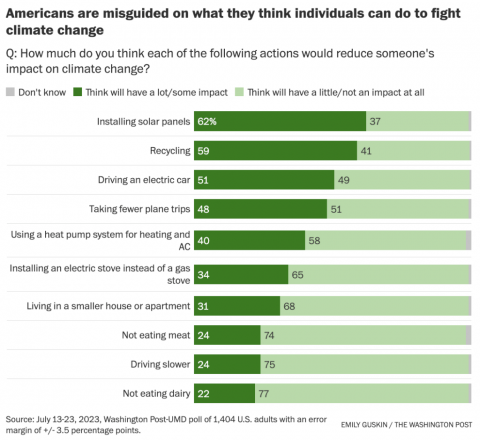
Two observations:
- It is sobering to see how few people know the impact of food, specifically animal foods, on climate change. There have been put into “educating” consumers about electric cars or the impact of aviation (which, globally, emits less than rice production).
- When this graph is compared to those above, it may also help to understand the decrease in veganism and vegetarianism.
3 – Consumers are still willing to experiment with plant-based alternatives
In another recently released report dedicated to foodservice sales of plant-based meat alternatives, we learn that volumes actually increased last year. While we often hear about their decline in retail sales, this data shows that consumers still buy these products when they go out.
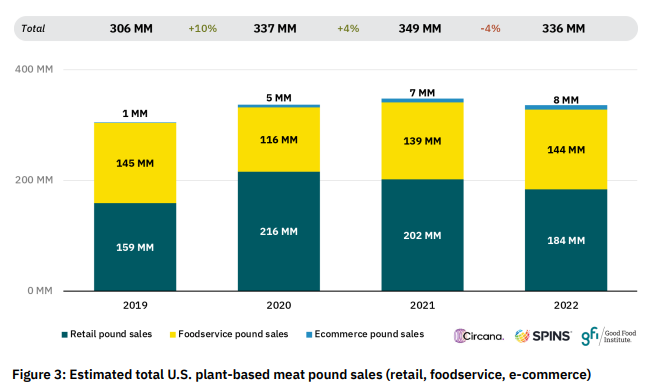
If this doesn’t change the current downward trend of overall sales, it shows that consumers are not turning their back on plant-based alternatives. While at home, they may reduce their spending due to inflation, they still enjoy alternatives when they go out.







